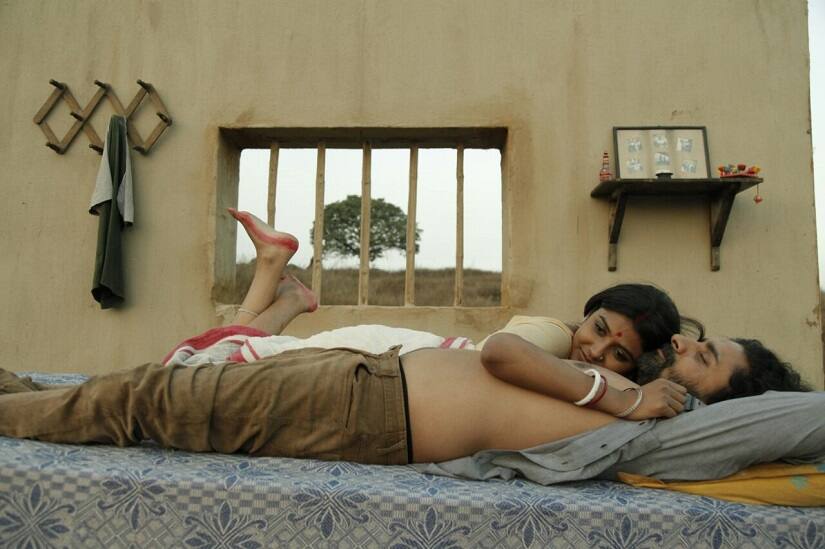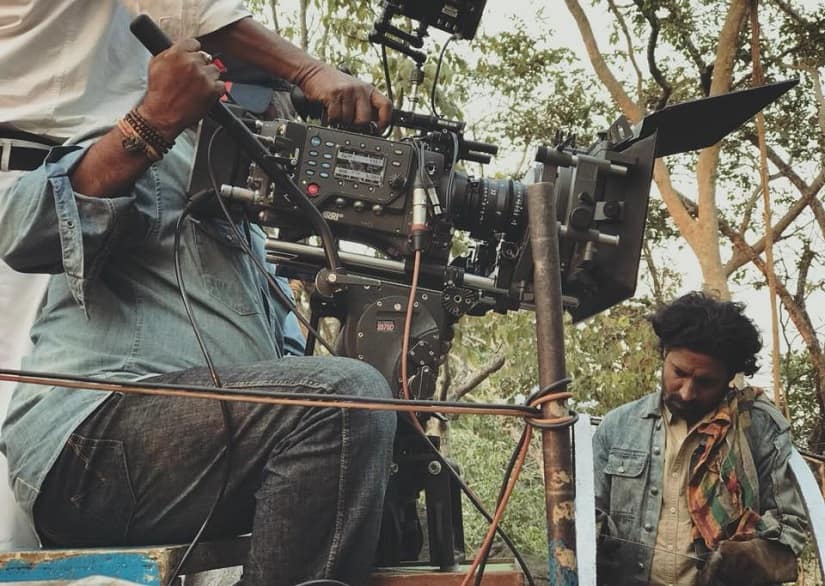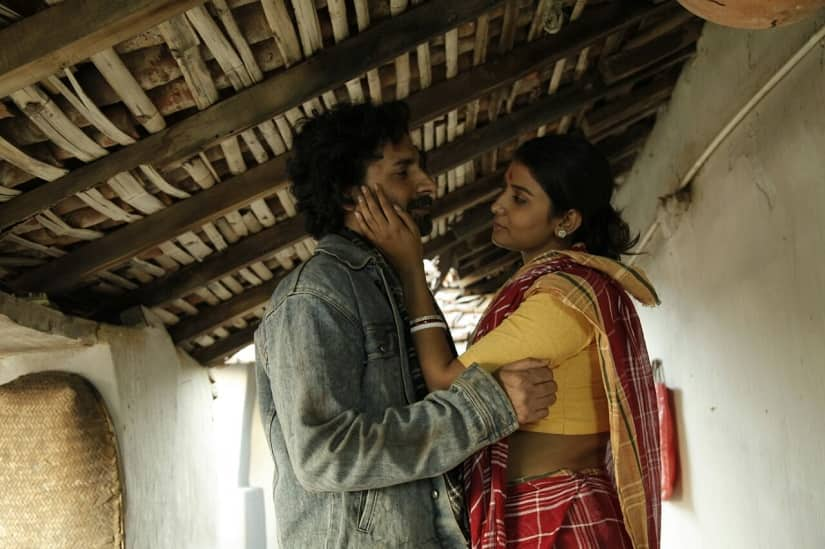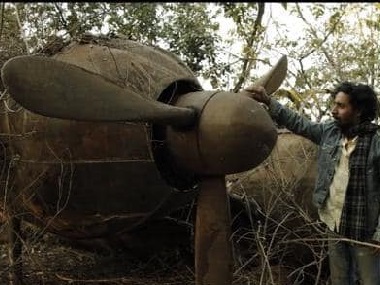One sunny day, while travelling on a bike, you decide to stop by a lake to quench your thirst. As you are about to take a gulp of water, you notice a mystical forest nearby. Immediately you feel like exploring it and see what lies among this wilderness. What if you suddenly spot an old bomber aircraft? What would you do with it? Renowned filmmaker Buddhadeb Dasgupta’s latest film, The Flight, explores the above mentioned scenario in the most surreal, picturesque manner, leaving the audience pondering upon a lot of things. While it is centred around the protagonist Bachchu Mondal (played by Chandan Roy Sanyal), the film also takes the viewer on an internal ride — one that throws light on the consciousness of an individual as well as the society. The Flight premiered at the 20th Jio MAMI Mumbai Film Festival on 28 October and Firstpost got a chance to interact with actor Chandan Roy Sanyal post the screening. Dasgupta himself couldn’t mark his presence at the festival owing to certain health issues. [caption id=“attachment_5487521” align=“alignnone” width=“825”]  Chandan Roy Sanyal and Parno Mittra in The Flight.[/caption] Like most of Dasgupta’s previous films, The Flight too delves in the realm of the unobvious and unreal and yet sets a hard-hitting realistic tone. The multi-National Award-winning director has a reputation for being a control freak and a micromanager. He shoots mostly in the twilight, prefers using minimal camera setup and makes a precise shot breakdown of his entire film. The Flight marks Sanyal’s second collaboration with Dasgupta after having worked together in the 2016 film Tope: The Bait. Sanyal tells us that the Dasgupta has only chopped off one shot from the whole film shoot, such is his cinematic acumen. “It’s like the whole film is ready inside his head. He knows what follows what, even before the shoot begins. And hence, his edit sessions basically includes putting all of the shots together,” he says. He adds that Dasgupta was pretty ill during the shoot, so much so that he was undergoing dialysis every day and he actually called for shots lying on a cot. Despite his ailing health, his acumen as a storyteller was spot on. Sanyal explains, “Being a poet himself, mostly whatever he writes are very short and crisp; they have optimum shot divisions and cuts. His films are almost like a short story book. He writes his films like a short fiction story and then shoots the film, creates the shots and moments — that he had already done in the head — in the desired weather, location, people on the sets. He tries to create an organic setup and captures it with whatever resources he is equipped with at the moment. He can almost create anything out of thin air.” Sanyal, who began his acting career in theatre, explains the much-apparent theatrical appeal to Dasgupta’s The Flight. “In plays, while everything moves around, the stage remains the same. Similarly, in The Flight, you see there are scenes where the actors are on the bed, while the backdrop is moving, the lights are changing, the camera remains stationary. There are scenes where you see the trees in the background moving; they were being manually pushed by people as per the cues of the actors, much like how we do in theatrical plays. While these things can be easily done in films today using special graphics, but he chooses to do it the manual way,” says Sanyal. *** Despite being sick, Dasgupta, via an email conversation, spoke to Firstpost and discussed various aspects of his latest film. How did you come up with the idea for The Flight? I had heard about an incident twenty-five years back where a villager had found some parts of a crashed plane in a swamp and started building a plane. It was somewhere near the India-Bangladesh border. This man was soon arrested by the police. They thought he had some foul intentions. A small report was out. I got intrigued by the incident and it remained with me for all these years. After my last film, The Bait, I decided to make a film on this man whose only dream was to fly. Why did you cast Chandan Roy Sanyal in the lead role? I wanted to cast a good actor but an actor who is not overused, someone whose expressions and acting style cannot be predicted by the audience. Chandan fit my requirements. He was also a part of my previous film, The Bait, which premiered in the Masters Section of Toronto International Film Festival; he gave a brilliant performance there. Hence, he became a spontaneous choice when I started scripting The Flight. He is dedicated, hard-working and gifted. [caption id=“attachment_5480991” align=“alignnone” width=“825”]  Chandan Roy Sanyal during the shoot of The Flight. Facebook[/caption] What is the most striking feature about surrealism or magic realism that makes you come back to this genre again and again? I believe that in any creative expression be it poetry, painting or cinema, the creator should leap beyond the known and predictable realistic tropes. In my films, I blend magic and dream with reality because mundane reality often bores me. When I make films, I keep in mind of a time that’s yet to come. How is The Flight different from your other films, in terms of the process of filming? My signature style has always been unconventional. I have never used big close-ups, talking heads, over the shoulder shots. My shots, edit, sound are essentially my very own. Yet, with every film, a new treatment and style emerge inspired by its content and premises; new elements surface. In that way, every film, though made with my signature style, is very different from the other. There has to be a novelty in every work. That hunger of expressing something new and unknown chases me. That’s why I get into a new venture each time. How much does the concept of time and space matter to a narrative like this? Does it play more with the psychology instead of the physics around? Time and space will be two quintessential elements in every attempt of cinematic expression. It is always a game with time and space. In The Flight, apart from the real time and space, also exists a new plane of time and space — which is the personal time and space of the protagonist. It is more metaphorical than psychological. Dream — which is an important theme of the film — is not just personal or psychological here it is about a larger context. Here, we see how a naive dream can actually turn into a life-taking threat, how power intervenes and controls that dream. What was the brief given to the actors working with you for the first time, given that it is already a daunting task to get screen space in your film? A director needs to understand the person first and then the actor. For some, they just need hints and signals. For some, I explain the character in detail, while for others I need to show them how to do it and I ask them simply to copy me. Here, Chandan had worked with me before, he didn’t need a huge briefing apart from the usual. Parno Mittra, who played Chandan’s wife, is a very talented and intelligent young actor who was very spontaneous on the set. With her, it was a basic discussion before the shoot. My team of associate and assistant directors are very efficient and handle these things well enough. [caption id=“attachment_5481001” align=“alignnone” width=“825”]  Chandan Roy Sanyal and Parno Mittra in The Flight.[/caption] There’s a lot of theatrical elements used in the film. Did you ever think of this as a play narrated in the format of a film? Cinema, theatre, performance art, music, dance etc — all these artforms embrace each other to create a new form in its own way in today’s time. No element should be considered form-specific. The Flight was never conceived as a play. Just that as a filmmaker, I constantly rebuild my medium, push the given boundaries and create a new style.
The Flight marks acclaimed filmmaker Buddhadeb Dasgupta ’s second collaboration with actor Chandan Roy Sanyal. They had earlier collaborated on the 2016 film Tope: The Bait.
Advertisement
End of Article


)
)
)
)
)
)
)
)
)



